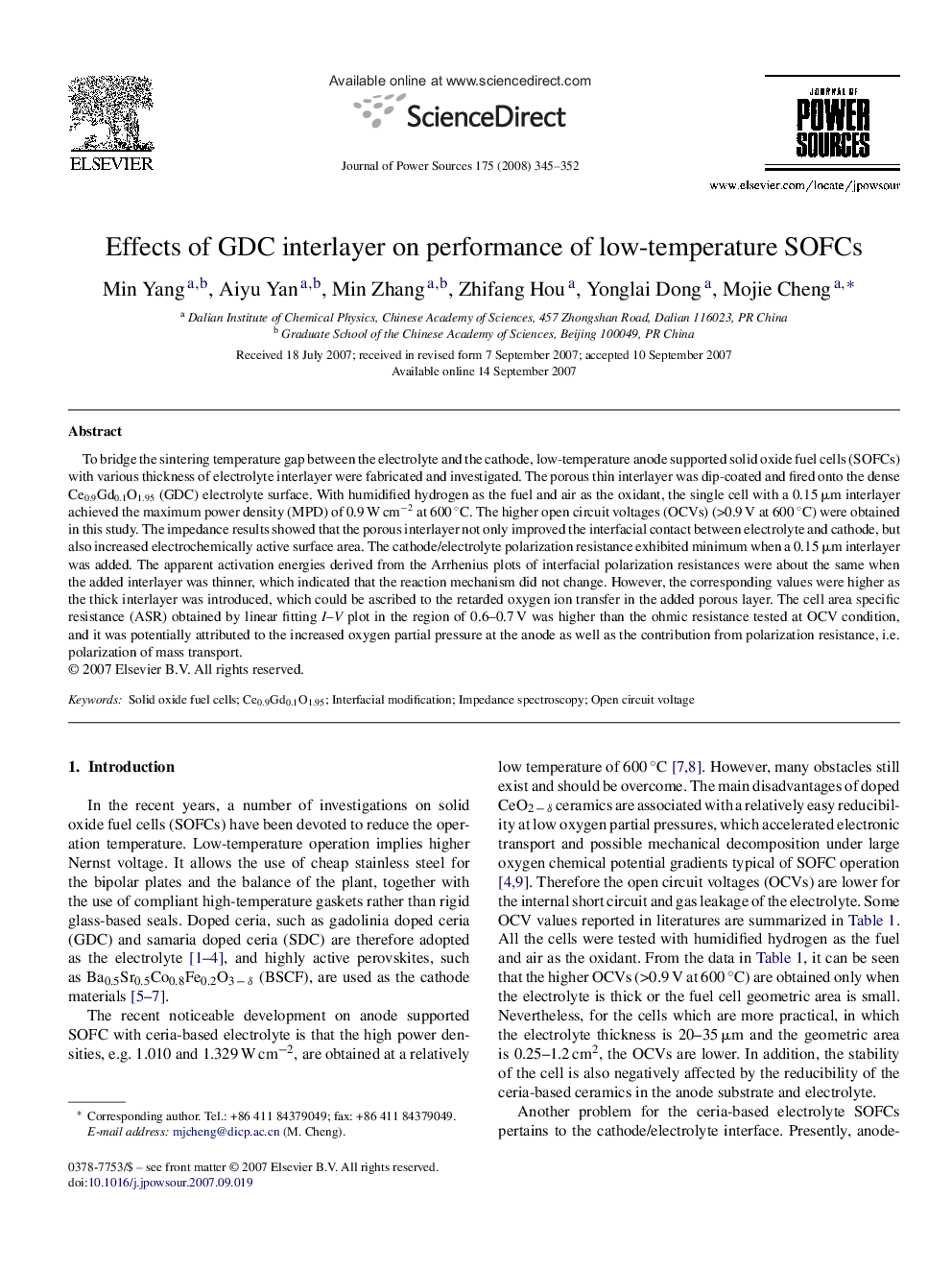| Article ID | Journal | Published Year | Pages | File Type |
|---|---|---|---|---|
| 1294789 | Journal of Power Sources | 2008 | 8 Pages |
To bridge the sintering temperature gap between the electrolyte and the cathode, low-temperature anode supported solid oxide fuel cells (SOFCs) with various thickness of electrolyte interlayer were fabricated and investigated. The porous thin interlayer was dip-coated and fired onto the dense Ce0.9Gd0.1O1.95 (GDC) electrolyte surface. With humidified hydrogen as the fuel and air as the oxidant, the single cell with a 0.15 μm interlayer achieved the maximum power density (MPD) of 0.9 W cm−2 at 600 °C. The higher open circuit voltages (OCVs) (>0.9 V at 600 °C) were obtained in this study. The impedance results showed that the porous interlayer not only improved the interfacial contact between electrolyte and cathode, but also increased electrochemically active surface area. The cathode/electrolyte polarization resistance exhibited minimum when a 0.15 μm interlayer was added. The apparent activation energies derived from the Arrhenius plots of interfacial polarization resistances were about the same when the added interlayer was thinner, which indicated that the reaction mechanism did not change. However, the corresponding values were higher as the thick interlayer was introduced, which could be ascribed to the retarded oxygen ion transfer in the added porous layer. The cell area specific resistance (ASR) obtained by linear fitting I–V plot in the region of 0.6–0.7 V was higher than the ohmic resistance tested at OCV condition, and it was potentially attributed to the increased oxygen partial pressure at the anode as well as the contribution from polarization resistance, i.e. polarization of mass transport.
